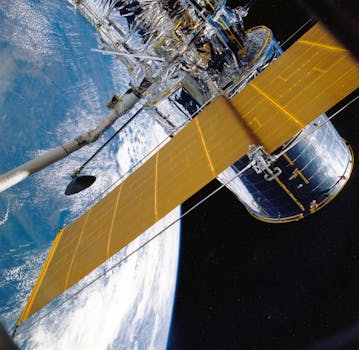GEO Satellites: Understanding the Technology and Applications of Geostationary Orbit Satellites

GEO Satellites: Understanding the Technology and Applications of Geostationary Orbit Satellites
GEO satellites, or geostationary orbit satellites, are a type of satellite that orbits the Earth at an altitude of approximately 36,000 kilometers, which is the same distance as the Earth’s equatorial radius. This means that GEO satellites have a fixed position in the sky, relative to a specific point on the Earth’s surface, and appear to be stationary. The focus keyword GEO satellites is crucial in understanding the technology and applications of geostationary orbit satellites.
The concept of GEO satellites was first proposed by science fiction writer Arthur C. Clarke in 1945, and the first GEO satellite, Syncom 2, was launched in 1963. Since then, thousands of GEO satellites have been launched, and they have become a crucial part of modern telecommunications, navigation, and weather forecasting.
How GEO Satellites Work
GEO satellites work by transmitting and receiving signals to and from Earth-based stations. They are equipped with transponders, which are devices that receive a signal, amplify it, and then re-transmit it back to Earth. The signals are transmitted and received through large antennas, which are typically parabolic in shape and can be up to 30 meters in diameter.
GEO satellites are powered by solar panels, which convert sunlight into electrical energy. They also have backup batteries, which are used to power the satellite during periods of eclipse, when the Earth passes between the satellite and the sun. The satellites are controlled by onboard computers, which are programmed to perform specific tasks, such as transmitting signals and adjusting the satellite’s position.
Applications of GEO Satellites
GEO satellites have a wide range of applications, including telecommunications, navigation, weather forecasting, and Earth observation. They are used to transmit television signals, provide internet connectivity, and support mobile phone networks. They are also used for navigation, such as GPS, and for monitoring weather patterns and forecasting weather conditions.
GEO satellites are also used for Earth observation, such as monitoring ocean currents, tracking climate change, and detecting natural disasters. They are equipped with specialized instruments, such as cameras and spectrometers, which are used to collect data about the Earth’s surface and atmosphere.
Challenges and Limitations of GEO Satellites
Despite their many applications, GEO satellites also have some challenges and limitations. One of the main challenges is the high cost of launching and maintaining a GEO satellite. Launching a GEO satellite can cost hundreds of millions of dollars, and the satellite must be replaced every 10-15 years, which can be a significant expense.
Another challenge is the risk of satellite failure, which can occur due to a variety of factors, such as technical malfunction or space debris. When a satellite fails, it can cause significant disruptions to telecommunications and navigation systems, and can also pose a risk to other satellites and spacecraft.
In addition, GEO satellites are also limited by their fixed position in the sky, which means that they can only provide coverage to a specific region of the Earth’s surface. This can be a limitation for applications that require global coverage, such as navigation and Earth observation.
Future of GEO Satellites
Despite the challenges and limitations of GEO satellites, they are likely to continue to play an important role in modern telecommunications, navigation, and weather forecasting. Advances in technology are making it possible to build more efficient and cost-effective GEO satellites, and new applications are being developed, such as satellite-based internet connectivity and Earth observation.
In addition, there are also new technologies being developed, such as megaconstellations, which are large networks of satellites that can provide global coverage and high-speed internet connectivity. These technologies have the potential to revolutionize the way we communicate and access information, and could also provide new opportunities for navigation, weather forecasting, and Earth observation.


